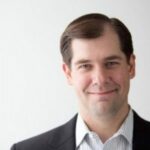

We should continue the state - and community-level work that is bringing to life a more pluralist approach to schooling, argues Andy Smarick.
Responding to
RECOMMENDED READING
Dear Ashley,
Thank you again for kicking off and advancing our conversation.
I’d like to close by making two points, both responsive, though in different ways, to issues you’ve raised.
Pluralism: Concept vs. Practice
First, I recognize the definition that you use for “educational pluralism.” It reflects a set of arrangements seen in various forms in other nations and not seen in the United States. I understand and appreciate why this is your preferred model. I also appreciate that articulating the ideal is helpful when thinking about reform.
The purpose of my response was to discuss what America has and how we got it. I did this as a way of trying to describe our complex K-12 landscape and explain the long train of decisions and events that shaped it. I also believe that the most successful reform efforts begin with a clear sense of what is and why it is. I’ve found that most policymakers are pragmatic, so reasoning from the particular laws, regulations, and practices that they know (and often that they crafted) is the best way to get traction.
As I wrote, I think the three categories you outlined in your first essay can serve as a valuable analytical tool. But since we don’t actually have those precise categories in practice, I tried to extract principles from each and show how those can be found in the three sectors we do have. Of particular interest to me were the similarities between what I called our “diversified public sector” and your pluralist category. What America has certainly falls short of your ideal, but this diversified public sector does have three features that are at the core of educational pluralism: a diversity of options, parental choice, and public accountability.
I believe that focusing on these shared characteristics is important for two reasons. First, they show us how even more progress can be made. We can expand the types of school options available. We can enable more families to exercise choice. We can find ways to ensure that school options are accountable for results.
Second, the educational pluralism model seen in other nations simply cannot be imported wholesale to America. For example, current—and longstanding—American jurisprudence holds that direct funding of religious schools is unconstitutional. Also, America’s private schools, including religious schools, have enjoyed centuries of freedom from the state; they would not accept other countries’ rules related to standards, curriculum, and state oversight. Lastly, most American parents like their local, district-run public schools (in the last year before the COVID pandemic, 60% of parents gave their communities’ schools an A or B). Efforts to upend, or at least disrupt, a system supported by tens of millions of parents would run into swift resistance.
These realities—constitutional, practical, and political—were why my essay focused on how America has tried to make the most of our three sectors’ best characteristics. We have maintained a sector of private schools that can incorporate faith; that can use a variety of approaches to curriculum, instruction, and assessment; and that can freely innovate based on parents’ needs and educators’ interests. We have maintained a district sector that meets many families’ needs and that addresses the public’s interest in democratic control, opportunity, and solidarity. And we have grown a diversified public sector that offers a variety of options under the umbrella of government accountability.
There are many aspects of America’s K–12 historical development that are shameful—from racially segregated schools to unequal opportunity for girls to anti-immigrant and anti-Catholic bigotry to assigning low-income kids to persistently underperforming schools. There is still enormous work to be done. But I nevertheless marvel at how our system has evolved over generations to meet the many and varied demands of this diverse, continental republic.
Pluralism Gains in Policy and Law
My second response relates to the ongoing evolution of America’s system of K–12 education, especially related to the diversity of options and choice. This is a matter of both policy and law. By the late 20th century, we had a K–12 system that had become entirely too uniform and inflexible. I attribute this mostly to the combination of the systematizing approach of the mid-19th century Common Schools movement; the nativist, professionalizing, consolidationist sensibilities of the turn of the 20th century Progressive Era; and the homogenization of politics and culture in the mid-20thcentury. Over the last several decades, enormous progress has been made—primarily thanks to state legislatures and the courts—to move in a different direction.
We should not forget that just 30 years ago nearly all public schools were owned and operated by school districts, that school districts were local monopolies, and that the vast majority of public school students were assigned to schools based on their home addresses. About 10% of students were in private schools, but for the rest, the only option was the local district-run school.
Since then, we’ve seen a staggering expansion of the options available to students. Today, thanks to charter school laws in 44 states, 7,500 charter schools educate more than 3 million students. More than half of states now have private-school choice programs—there are more than 70 programs nationwide. We also have online options, magnet schools, career and technical (CTE) high schools, inter- and intra-district choice programs, dual-enrollment programs, hybrid homeschooling, and pandemic-era phenomena like pods and hubs. I think it is safe to say that there has never been a time in American history when more families have had more access to more options offered by more providers.
As interesting, especially for those who would like to see religiously affiliated schools play a larger role in our system, is the progress on the legal front over the last 20 years. In a long series of cases across the 20th century, the U.S. Supreme Court had removed just about all vestiges of faith from public schools and stopped public funding from reaching faith-based schools. The Court had reasoned that the Establishment Clause of the First Amendment required the government to keep a safe distance from religion when it came to schools.
But things started to turn in 2002 with Zelman v. Simmons-Harris. Upholding Ohio’s voucher program, the Court ruled that a state school choice program is constitutional if government dollars go to parents who, presented with a variety of options, choose faith-based schools. If the government funded parents, the federal Establishment Clause was not a barrier to states’ supporting a slate of K–12 options that includes religious schools.
More recently, the Court has elevated the place of the Free Exercise Clause in cases related to religious schools. In Trinity Lutheran (2017) and then Espinoza (2020), the Court ruled that when a state makes education funding available to an array of non-governmental entities, the state cannot single out faith-based groups for exclusion. These cases seem to have made clear that when states open education programs to private entities, religious organizations must be able to participate on equal footing. These three cases in combination allow faith-based schools to play a larger role in our overall system of K–12 schooling.
Just this month, the Court heard what might prove to be the most significant case in this line, Carson v. Makin. At issue is Maine’s policy of prohibiting religious schools from participating in its tuitioning program. Some Maine districts are so small that they cannot afford to maintain a high school, so the state gives families in those areas funding so they can pay for a private school. Though this seems exactly like Trinity Lutheran and Espinoza, Maine is defending its exclusion of religious schools from funding along different lines. Maine argues that other states’ scholarship programs enable students to exit the public system, while Maine’s program allows private schools to function as public-education providers. And since the state should be permitted to maintain a secular public-education system, Maine argues that it should be able to only allow sufficiently secular private schools to participate.
In oral arguments, a majority of justices seemed skeptical of Maine’s tack. It seems likely that, at minimum, the Court will strike down Maine’s policy of excluding faith-based schools because, regardless of Maine’s attempt to redefine participating private schools as public schools, Maine’s program is essentially a scholarship program. But it is possible that the Court will go further. The Court could concede that private schools do function as public schools when participating in Maine’s program but still rule that all private providers must be treated similarly even if they are serving in a public capacity. If that happens, the Court would be saying that any time a public system engages private providers for a service, it must allow religious providers to participate. And that could mean religious providers operating charter schools, contract schools, reading programs in public schools, and much more.
My overarching point is that although American cannot simply adopt in full the educational pluralism approach seen in some other nations, we should not undersell what America has already done and what could be on the horizon: Namely, American K–12 education has dramatically expanded options and choice and even more of that could be on the way. We should continue the state-level policy work and the community-level social entrepreneurialism that are creating more and more choice-based education options and bringing to life a more pluralist approach to schooling.
Optimistically,
Andy
Recommended Reading
‘College for All’ Is Broken. Let’s Embrace Opportunity Pluralism Instead.
Bruno Manno features a recent American Compass survey on higher education in a discussion of the failures of the “college-for-all” model.
New Education Models Need New Schools
Education policy should spur the creation of new schools and learning models for job-oriented education.
Between the Common School and the Market
Johns Hopkins’s Ashley Berner discusses the benefits and tradeoffs of a pluralistic approach to education in America.












